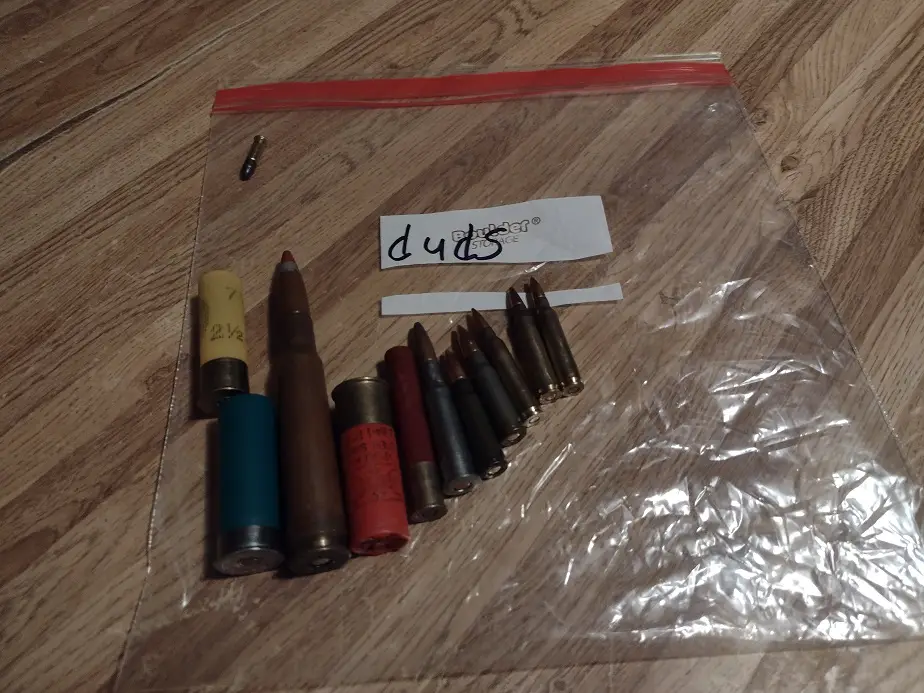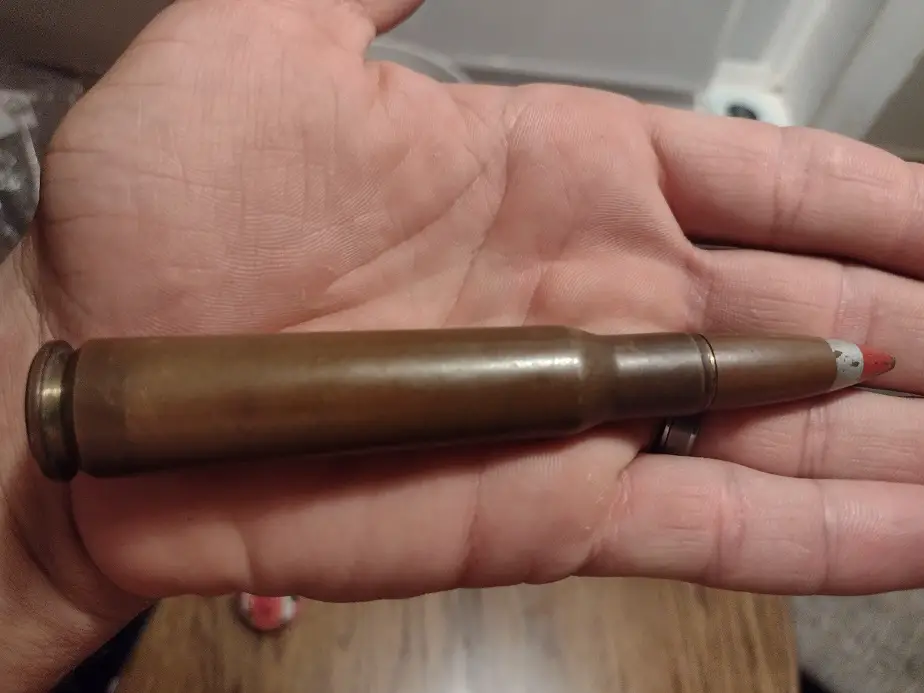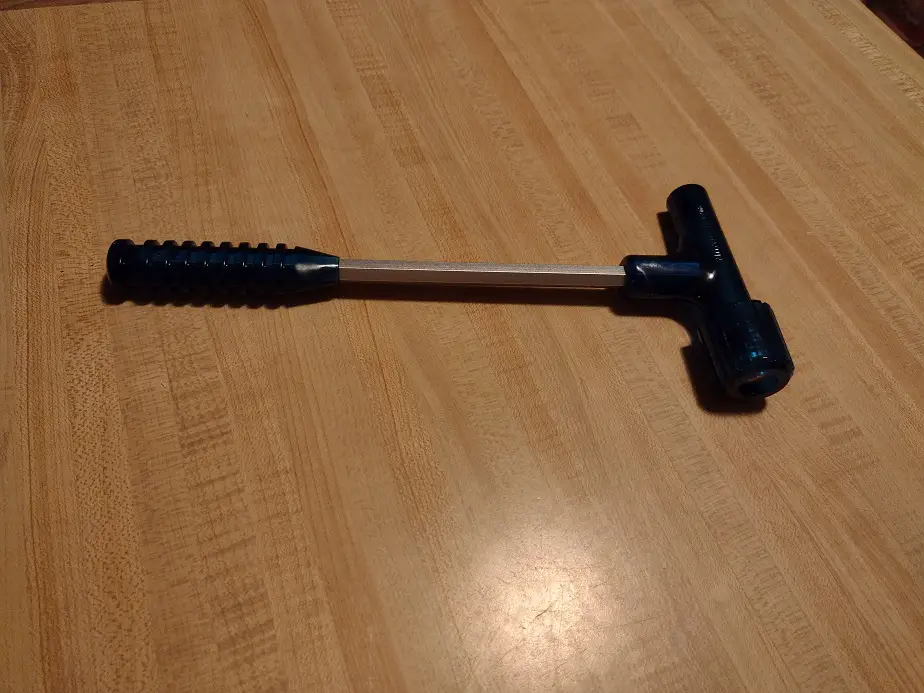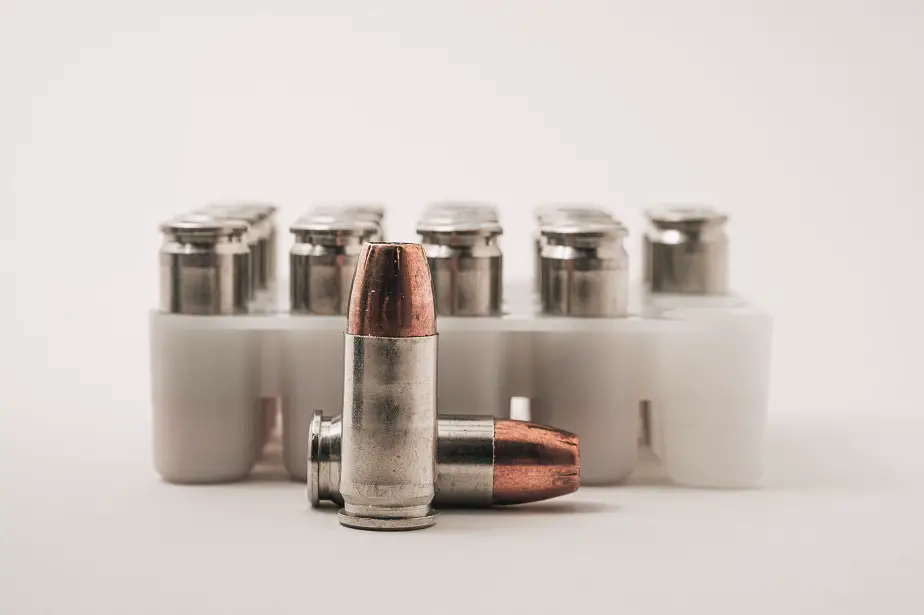Most hunters have old ammo lying around. I just found some paper shotshells from the late 1950s. Do You know what to do with old ammo or how long it’s good for?
Most ammunition has a shelf-life of 50 years. Heat will deteriorate the gunpowder, and humidity can alter its burn rate. Ammo loaded with single-base gunpowder is good for 35-140 years depending on storage conditions. Double-base powder deteriorates twice as fast. The US military decommissions its rifle and pistol ammo after 45 years.
There are a number of variables that cause ammo to go bad. Proper storage will increase its shelf-life. Bad ammo can pose safety hazards under the right circumstances and it’s best you take steps to prevent that.

Can Ammo Go Bad?
Ammo can go bad, loos its potency, and in extreme cases, potentially be dangerous. Deterioration of the case, powder, or primer can cause ammunition to become unreliable and may pose a safety hazard. Ammo stored in high heat or humidity can become unreliable over several decades.
Ammo can and does go bad all the time, but it’s quite rare that any ammo in long-term storage actually goes bad. For ammo to go bad, either the case has to weaken, the powder to destabilize, or the primer to fail. All of those are pretty unlikely most of the time.
The most common issue leading ammo to go bad is corrosion of a meta, case. Steel cases are worse off than brass or zinc cases. Even though steel cases are coated with a lacquer or polymer, they can rust if stored in a high moisture area like a basement.
A rusted case will often become stuck and may cause the case to split. Light corrosion should be fine if it can be wiped off with a cloth. Deeply corroded cases may pose a danger. If you have any like that, consider just pulling the bullets and dumping the powder to decommission them.
In rare cases, gunpowder can go bad. You don’t have a visible way to check for this without disassembling s round or two. Bad gunpowder has a displeasing odor and a red tint to it, as opposed to a nice steel grey.

Is it Old Ammo Safe to Shoot?
If there is no visible corrosion, old ammo is likely fine to shoot. There is an increased chance of a misfire or a squib load. If a shot sounds unusual, check the barrel for obstruction before firing again. Surplus ammo from the 1940s is still being sold and used by shooters across the country.
Old ammo can become non-functional and pose an increased risk to the shooter and bystanders. Even among very old ammo, this is pretty rare. I’ve recently fired ammo from 1943, which performed flawlessly.
Generally speaking, if it looks good, it is probably fine to shoot. Things can become unsafe if stored improperly and by that, I mean not in a cool dry environment. Heat kills ammo. That being said, it still seems to be exceedingly rare for people in hot climates, like Texas, to experience issues with old ammo.
Can Old Ammo Explode?
A box of bullets cannot explode simply from being old. Long-term storage in fluctuating humidity can change the structure of the gunpowder, increasing the burn rate which will cause a pressure spike in the chamber. Modern guns should handle this, but it may push the gun near its proofing pressure.
You may have heard about an ammo factory exploding. It’s happened a few times in Russia. And there was the storage facility supposedly full of fertilizer and fireworks in Beirut that exploded (a known stockpile of confiscated military munitions).
How does this just happen? Explosives contain volatile chemicals. Many of them are unstable enough to potentially gas out the unstable chemicals. This could create a warehouse full of potentially explosive gas. Sound far-fetched? According to the top chemical engineering experts, it should be possible.
In reality, all the munitions explosions, and we’re talking large munitions, I could find reference to were caused by a fire. With billions of rounds in the US, none have ever spontaneously combusted. Nope, no issue there.
Now, there is a thing. This thing probably has a name to a group of scientists somewhere. Gunpowder has nitroglycerine as the main combusting agent. Nitroglycerine is water-soluble and water is in humid air. This is where it gets technical.
If the inside of the case becomes humid to just the perfect degree for just the right length of time, the nitroglycerine in the individual grains of gunpowder can wick out and become more concentrated on the exterior of each grain of powder.
This would create a massive increase in the burn rate of the powder, which would cause a very high very early pressure spike, probably causing massive failure to the gun, aka, Kaboom.
However, at the same time, the nitroglycerin has become destabilized and has been breaking down. So, there’s less nitro in the powder to wick around. On top of that, it’s so rare that I’ve never found a single documented case of it happening. It’s theoretically possible, but about as common as verified Bigfoot sightings. however, However
To determine how dangerous this might actually be, I’ve been researching the Philippines. Most of their ammo is WWII and Cold War leftovers, and it’s stored in a hot humid jungle without climate control. To date, the only issue I’ve heard of are misfires from old ammo.
What Happens When Ammo Goes Bad?
As for ammo ages, the stabilizing agents in the gunpowder weaken and eventually break down completely. This causes rapid oxidation of the Nitroglycerine, weakening the powder and releasing Nitric Acid gas. This causes the ammo to become weakened and unreliable.

Are Corroded Bullets Okay to Shoot?
If ammo has corrosion that does wipe cleanly off with a rag, it should not be fired as it poses a high risk of splitting the case or getting stuck in the chamber. Pitted or heavily corroded ammo should be disposed of in a safe manner.
Corrosion can destroy good ammo. that’s why you should keep ammo clean and stored in a dry container. Old shotshells often rust around the steel band at the base. They will usually split, swell up, and get stuck after firing. Been there done that. It wasn’t fun getting it out.
Corrosion weakens the metal. If it’s weak in the wrong spot, it can at a minimum blow powder-filled gasses back in your face. Not fun. The hot gasses can damage parts of the gun that are not designed to handle it.
Can I Shoot Tarnished Bullets?
A tarnished bullet will have no negative effects on ballistics. Tarnish on the case or bullet will not pose any problem. Bullets tarnish from aging and being handled and it bears no impact on safety or reliability.
Both bullets and the cases they come in are highly polished and usually come with a light coat of oil, or something similar. When touched, the salty skin oil breaks through and causes tarnishing anywhere it was touched. The more ammo is handled, the more tarnished it will get.
A bigger reason not to handle ammo too much is to keep it clean. Clean cases feed better and will have a more consistent pressure spike, i.e. it will shoot better groups. Gunk on a case, including built-up skin oil and grime, can make the case tighter in the chamber. It also makes it stick more. Polished metal is much slicker.
If ammo is dirty or grimy, it should be cleaned to prevent jamming and overpressure. You can clean dirty ammo with a cloth or cleaning patch and some basic gun cleaner like HOPPE’S Bore Cleaner or Balistol. I once had a cup of coffee spill in an ammo can. Boy, what a tedious job to clean up.
Is it illegal to throw away ammo?
It’s usually legal to throw live ammo in the trash, but doing so poses a fire risk if extreme heat or impact to the primer were to occur. The danger of improperly disposing of ammo is a fire risk, not a ballistic risk. If it went off outside of a gun, the bullet would not have enough force to cause any injury.
Don’t throw away live ammo. Seriously, what would Smokey the Bear say? The last thing you want to cause is a literal dumpster fire in the back of a garbage truck going down the highway. Now, that probably would never happen because a trash compactor isn’t exactly the fast sharp impact needed to set off a primer. Still, it’s a possibility.
You need to play it safe when dealing with gunpowder, including the powder inside a loaded cartridge. It’s easy to make sure you won’t have any unintended consequences.

How to Dispose of Old Ammo
Ammunition is properly disposed of by firing it or disassembling it. if it is simply old, it can be shot at a shooting range. If it is unsafe or unable to be shot, the bullet must be removed and the powder dumped out. Local shooting ranges can help you safely dispose of bad ammo in any condition.
The US military labels ammo to be disposed of at the 45-year mark. At that point, it’s gathered up and fired in a long session of full auto mag dumping at the firing range. Unlucky soldiers get blisters from loading magazines all day for others to shoot.
If the ammo is heavily damaged or corroded, or if you don’t have the gun to fire it in, you can safely pull the bullet with a bullet puller or pair of vise grips. I have an inertia bullet puller for this job. It cost me $10 on Amazon.
Old ammo is often a collectible item among shooting enthusiasts. You can always ask any firearms enthusiast or sportsman’s club if they will simply take the ammo from you. Most handloaders would be willing to disassemble bad ammo for you, just so they can keep certain components for reuse.
Do not cut or incinerate any live ammo. The gunpowder can be dumped outside on your lawn. It’s actually completely safe to do so and it’s a decent nitrogen-rich fertilizer.

